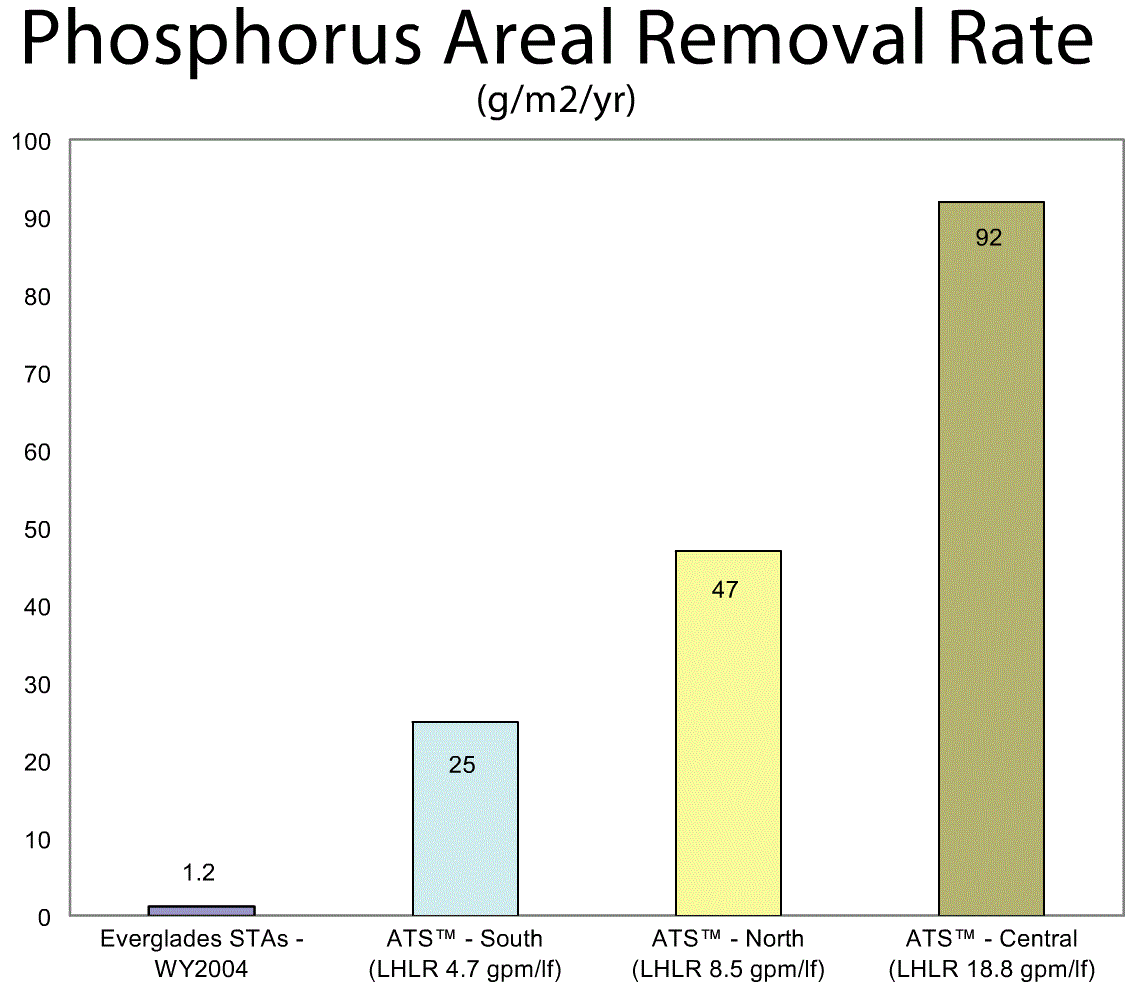Challenge
The South Florida Water Management District, Florida Department of Environmental Protection and the Florida Department of Agriculture and Consumer Services contracted HydroMentia to build a prototype Algal Turf Scrubber® surface water treatment facility in the Lake Okeechobee Watershed (LOW). The prototype was constructed to quantify performance while optimizing for phosphorus load removal, (ii) refine design conditions for a full-scale ATS™ unit in the LOW and (iii) allow for accurate engineering estimates of full-scale treatment system costs in the LOW.
Solution
Three independent Algal Turf Scrubber® units were operated at three linear hydraulic loading rates to quantify performance and determine optimal design for full-scale application of the ATS™ technology.
Results
Three independent Algal Turf Scrubber® floways of 300 length were operated at linear hydraulic loading rates (LHLR) of 4.7 gpm/lf, 8.5 gpm/lf and 18.8 gpm/lf to determine the optimal system design for surface waters within the Lake Okeechobee Watershed. 
For purposes of phosphorus load reduction within the LOW, the highest LHLR was determined to provide the best performance, with total phosphorus recovered at a rate of 92 g m-2 yr-1 or (820 lbs acre-1 yr-1) from a mean inflow phosphorus concentration of 333 ppb.
Based on system performance, 50-year Present Worth phosphorus treatment costs for a 25 million gallon per day gravity flow facility were projected to range from $9.38 to $36.16 per pound of phosphorus recovered. (5.375% Discount Rate, TPIN = 100 to 500 ppb). Project findings were supported by an independent University of Florida Institute of Food and Agricultural Sciences economic study, where it was determined that phosphorus treatment costs ($/kg P-removed) for proposed treatment systems in the Lake Okeechobee Watershed were 53 – 69% lower than costs for wetland treatment systems (Sano et. al, 2005.)
